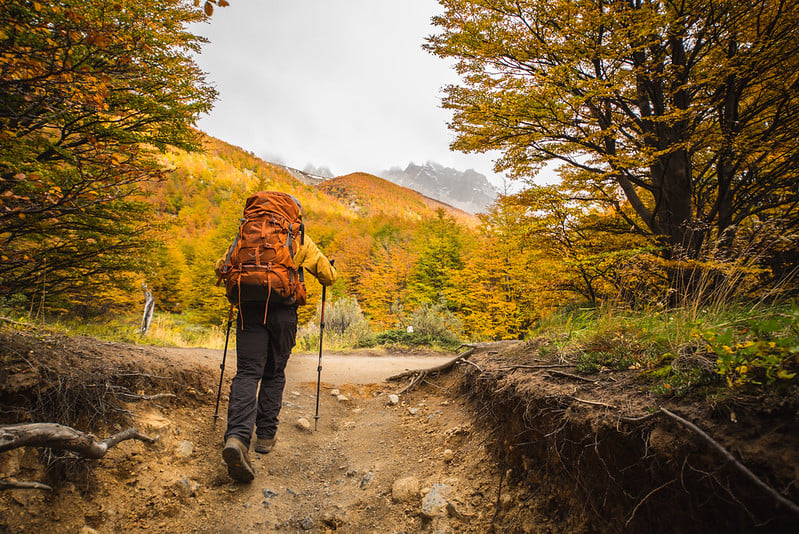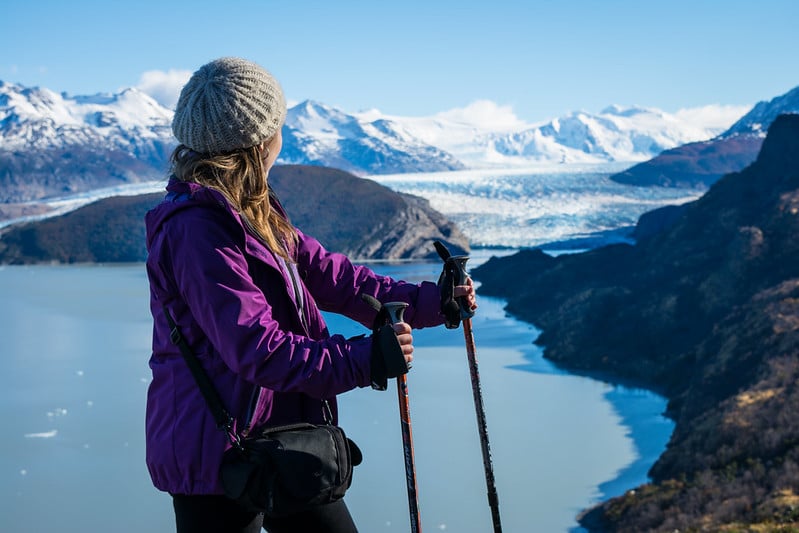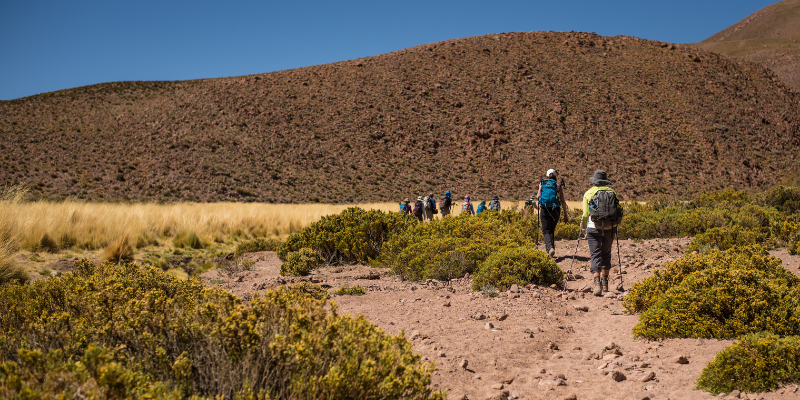The world-famous W Trek in Chile’s Torres del Paine National Park is known as a classic hike that is challenging, but not particularly steep. Still, only a country that lives in the constant shadow of the enormous Andes could refer to this terrain as “Patagonian flat” - it’s certainly not short of its ups and downs!
On the one hand that’s a good thing since it means you get to alternate the muscle groups you’re using, but it doesn’t make the downhills any gentler on the knees. Any hiker can feel their joints aching after a day or two on the trail, so here are some steps you can take before, during and after your Torres del Paine W Trek to look after your knees!
1. Slow Down
When you’ve been slogging up a particularly challenging incline it can be hugely tempting to take off the brakes and power through the following downhill stretch as fast as your legs can carry you, especially if you’re running slightly behind schedule. But whilst gravity supplies most of the momentum and takes the strain off your muscles, your knee-joints will take an absolute pounding. Take downhill trails at a steady pace right from the outset to ensure that your knees will last the whole trek.
2. Use Hiking Poles
When used correctly, hiking poles can be a saving grace for those with creaky knees. Using a pair of hiking poles on a descent transfers some of the impact produced by your feet hitting the trail to the poles and distributes it away from your knees. It is important, however, to learn how to use your poles correctly as relying on them in the wrong way can alter your balance and gait, causing more joint problems in the long-run. Read more about the advantages of hiking poles here!
3. Side Step or Zigzag
There are techniques you can use on the W Trek trail to decrease the force on your knees if you don’t want to rely on mechanical aids. Side stepping down the mountain, for example, requires less bending at the knee and will automatically slow you down. You can also try travelling in a zigzag pattern which will decrease the gradient and the strain on your joints. Make sure you stick to the marked trail so you don’t exacerbate path erosion problems. If this is impossible, just be sure not to lock your knees and to control your descent by flexing your quads on each downward step.
4. Carry Less Weight
Whether on your back or about your middle, any weight you carry while hiking exerts a force three to six larger than its own weight on your knee joints for every step you take. So first of all, lose everything that you don’t need from your rucksack and if you’re carrying some excess weight about your person, it’s a good idea to try to shed that in advance too. Of course you could also make use of a porter service - included in all of Cascada’s W Trek tours - to really take the pressure off.

5. Wear a Knee Brace
If you already know that you’re susceptible to sore knees, pack a knee brace in your bag for use if the pain kicks in. Make sure that you use a proper knee brace rather than a stretchy bandage-style support as these can actually restrict the joint and cause swelling. Knee-braces are also only a short-term solution and it’s important not to become reliant on them.
6. Train your Leg Muscles
There are all sorts of reasons that it’s a good idea to get in shape before you tackle the Torres del Paine W Trek, not the least of which is to protect your knees. The stronger your leg muscles are at the beginning of your hike, the greater control you’ll have when heading downhill. It’s all very well knowing that you shouldn’t lock your knees but if you don’t have the strength to follow through with the advice it won’t do you any good. Learn more about building up strength in all of your leg muscles for increased stability here!

7. Soak your Knees in Cold Water
After a hard day on the W Trek trail, you may be dreaming of a long soak in a hot bath, but in fact a cold soak will do your sore knee joints more good. A short soak in an ice bath will reduce swelling and inflammation in both joints and muscles and can even reduce recovery times. And if you’re wondering where you’ll find an ice bath in the backwoods, the good news is you’re in Torres del Paine, packed full of glacial rivers, streams and lakes; you’ll have your own personal ice bath whenever you need one!
8. Choose Shock Absorbing Boots
As a rule, hiking boots are designed to absorb shock better than regular shoes anyway (that’s just one reason you shouldn’t attempt the W Trek in your sneakers!) but there are certain models of boot that may give you superior protection. Look for boots with Polyurethane (PU) or Thermoplastic Rubber (TPR) midsoles for maximum shock-absorption. Or if you’ve already got your trusty hiking boots, enhance them with specialist shock-absorbing hiking insoles.
Ready to take on the Torres del Paine W Trek? Get in touch with our team today at reservations@cascada.travel.















